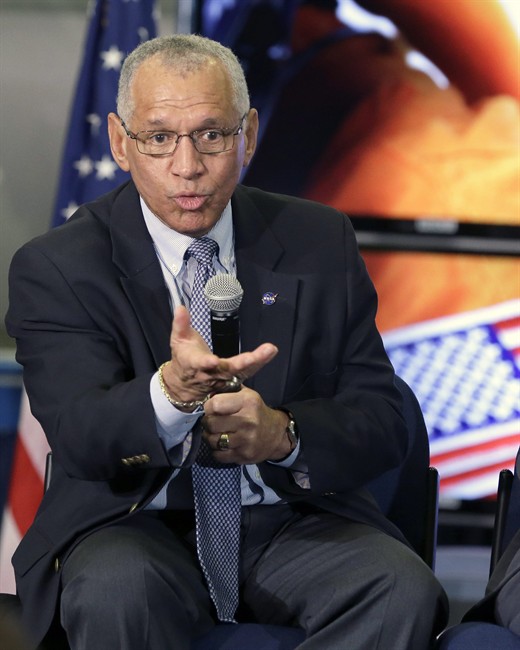WATCH: NASA announced its latest money-saving plan by introducing commercial flights to space without Russia’s help.
CAPE CANAVERAL, Fla. – NASA expects to save millions of dollars sending astronauts to the International Space Station, once its commercial crew program starts flying in a couple of years.

SpaceX and Boeing said Monday that they are on track to carry out their first manned test flights to the space station in 2017. NASA chose the two private companies last September to transport American astronauts to and from the orbiting lab.
U.S. manned launches ended with the retirement of the space shuttles in 2011. Until SpaceX and Boeing begin flying crews from Cape Canaveral, NASA astronauts must continue to hitch rocket rides with Russia.
READ MORE: Elon Musk’s SpaceX raises $1 billion from Google, Fidelity
NASA’s commercial crew program manager, Kathy Lueders, said the average price for a seat aboard the SpaceX Dragon and Boeing CST-100 capsules will be $58 million. That compares with $71 million a seat charged by Russia under its latest NASA contract.
“I don’t ever want to have to write another check” to the Russian Space Agency after 2017, said NASA Administrator Charles Bolden, a former shuttle commander.
“If we can make that date,” he said, referring to 2017, “I’m a happy camper.”

Unlike the Russian charge, the $58 million per-person cost estimate includes a fair amount of cargo to be flown aboard the SpaceX and Boeing spacecraft, along with four crew members. That price tag is based on a five-year period, Lueders said.

Get daily National news
The Russian Soyuz holds a maximum of three people, with at least one a Russian to pilot the craft.
SpaceX President Gwynne Shotwell said the future enhanced Dragon capsule could carry five astronauts — one more than NASA’s stipulated four — and still meet all the cargo requirements.
The Hawthorne, California, company, led by billionaire Elon Musk, was the space station’s first commercial shipper. It’s been successfully delivering supplies since 2012 with the Dragon. Virginia’s Orbital Sciences Corp., NASA’s other contracted supplier, has grounded its rocket fleet following a launch explosion last fall.
READ MORE: Russians suggest Americans use trampoline to get astronauts into space
Lueders said the plan is to have two “robust providers” for crew transport, in case one of them ends up grounded by technical problems. NASA awarded SpaceX $2.6 billion for crew transport, while Boeing got $4.2 billion. Each is to provide two to six missions.
Boeing’s vice-president and general manager for Houston-based space exploration, John Elbon, said an unmanned test flight of the CST-100 capsule in 2017 will be followed a few months later by the first crewed test flight. That first manned mission will include one Boeing test pilot and one NASA astronaut, he said.
Shotwell said the SpaceX unmanned test flight could occur as early as 2016, followed by a crewed flight in 2017. She said the company is still working on the number and makeup of the first crew.
It was the first in-depth public description of the commercial crew effort by NASA and winners SpaceX and Boeing; discussion had been stalled because of a protest lodged by losing competitor Sierra Nevada Corp., developer of the mini-shuttle Dream Chaser. The Government Accountability Office dismissed Sierra Nevada’s challenge earlier this month.
Some of NASA’s 40-something-member astronaut corps turned out for the event at Johnson Space Center in Houston. Bolden urged “they better start smiling.”
READ MORE: WATCH: NASA tests rocket engine designed to get humans to Mars
While the current astronauts will be the ones flying to the space station on Dragons and CST-100s, it will be the younger, future crop that ends up bound for Mars, he noted.
NASA conducted a successful orbital test flight of its new Orion spacecraft last month. That’s the capsule that, along with linked habitats, would get crews to and from Mars in the 2030s under NASA’s current plan.
Bolden said NASA wouldn’t be able to do deep-space exploration if it was still saddled with getting supplies and people to low-Earth orbit.
“We’re about going to Mars,” he said.

Comments